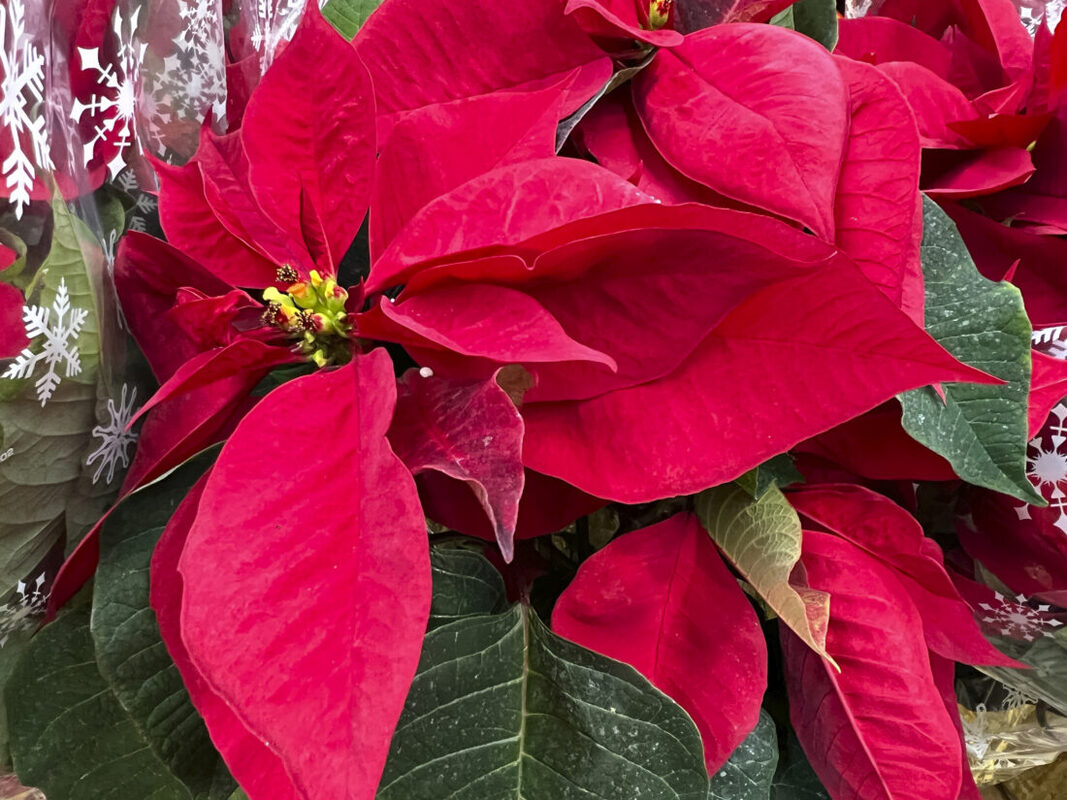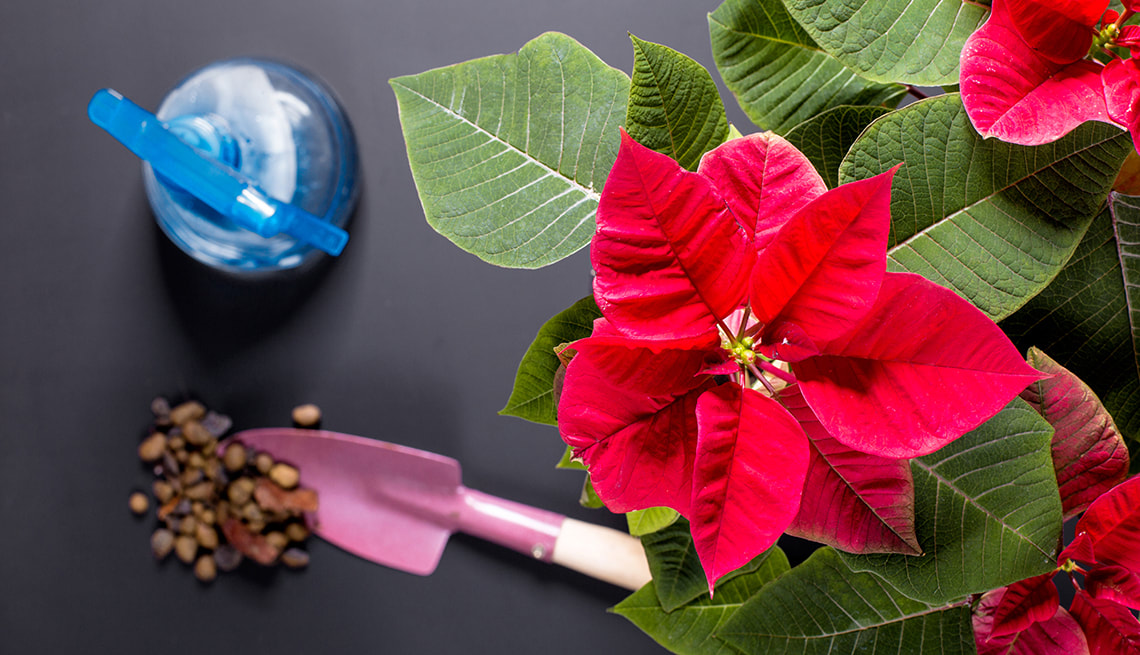Keeping A Poinsettia Alive After Christmas.
Not so fast! You don't have to toss your Christmas poinsettia away just now. The red and white flowering beauties can be kept all year- round. And with proper care and attention they will rebloom just in time for next year's festivities.
Growing poinsettias as houseplants is pretty simple: Provide water, sunlight and occasional fertilizer, and they'll be happy. Getting poinsettia to bloom for nex December? is another story altogether. Are you up to the challenge?
Here's how!
*After the holidays, set the plant in a sunny spot, watering as needed until the flowers fade, then stop watering.
* When the plants drop their leaves and enter dormancy, lay the pots on their sides and place them in a cool, dark spot such as an unheated cellar, until April. Visit them periodically and spray them with water if their stems start to shrivel.
* In April prune 2 inches off of each stem and reintroduce plants to their sunny spots in the living area of your house. Poinsettias thrive best in temperatures between 70 - 75 degrees during the day and 60 - 65 degrees during the night. Keep the soil moist but not soggy.
* If you'd like to move the plant outdoors for summer, wait until the danger of frost has past, then transition them gradually by increasing their outdoor exposure by a few days. Otherwise, continue to care for them as houseplants. Either way, begin feeding monthly, one teaspoon of 20-20-20 fertilizer per gallon of water.
* Bring vacationing poinsettia back indoors by September, first checking for insects and rinsing plants and pots with a gentle stream of water.
*In order to flower, poinsettia need a 40-day period of complete darkness for 15 hours daily. So, beginning October 1, keep the plants in a bright sunny spot, from 8:00am to 5:00 pm daily, then move into a dark place from 5:00pm to 8:00 am.
* When bracts begin to take on a reddish or white hue, typically around the second week of November, start keeping plants in the main parts of the house full-time. Continue to water and fertilize, and place your poinsettia in a prominent spot among your holiday decorations.
Good luck.
Credit: The MINING
Journal
Growing poinsettias as houseplants is pretty simple: Provide water, sunlight and occasional fertilizer, and they'll be happy. Getting poinsettia to bloom for nex December? is another story altogether. Are you up to the challenge?
Here's how!
*After the holidays, set the plant in a sunny spot, watering as needed until the flowers fade, then stop watering.
* When the plants drop their leaves and enter dormancy, lay the pots on their sides and place them in a cool, dark spot such as an unheated cellar, until April. Visit them periodically and spray them with water if their stems start to shrivel.
* In April prune 2 inches off of each stem and reintroduce plants to their sunny spots in the living area of your house. Poinsettias thrive best in temperatures between 70 - 75 degrees during the day and 60 - 65 degrees during the night. Keep the soil moist but not soggy.
* If you'd like to move the plant outdoors for summer, wait until the danger of frost has past, then transition them gradually by increasing their outdoor exposure by a few days. Otherwise, continue to care for them as houseplants. Either way, begin feeding monthly, one teaspoon of 20-20-20 fertilizer per gallon of water.
* Bring vacationing poinsettia back indoors by September, first checking for insects and rinsing plants and pots with a gentle stream of water.
*In order to flower, poinsettia need a 40-day period of complete darkness for 15 hours daily. So, beginning October 1, keep the plants in a bright sunny spot, from 8:00am to 5:00 pm daily, then move into a dark place from 5:00pm to 8:00 am.
* When bracts begin to take on a reddish or white hue, typically around the second week of November, start keeping plants in the main parts of the house full-time. Continue to water and fertilize, and place your poinsettia in a prominent spot among your holiday decorations.
Good luck.
Credit: The MINING
Journal

